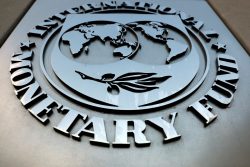 One of the most dedicated studies of a single author in Guyanese and West Indian literature has recently been released by the UWI Press. This is Aftermath of Empire: The Novels of Roy A.K. Heath by Ameena Gafoor.
One of the most dedicated studies of a single author in Guyanese and West Indian literature has recently been released by the UWI Press. This is Aftermath of Empire: The Novels of Roy A.K. Heath by Ameena Gafoor.
Full-length criticisms devoted to a single Guyanese writer are, surprisingly, very rare. Critical attention to Wilson Harris has been overwhelming, and after too long a gap, considerable attention was paid to Martin Carter. But full-length books on any one Guyanese novelist have not been published in abundance. There have been two devoted to David Dabydeen, and although Gafoor tells us in her Introduction that foremost Guyanese novelist Heath has not received the critical attention he deserves, there has been another critical work on Heath. Colonialism and the Destruction of the Mind: Psychological Issues of Race, Class, Religion and Sexuality in the Novels of Roy Heath was written by Amon Saba Saakana and published in London by Karnak House in 1996. Aftermath of Empire: The Novels of Roy A. K. Heath is the second, and the more complete and comprehensive. This speaks to the important place that Heath commands in Guyanese literature and evidence of the impact he must have made internationally.
It also suggests the magnitude of the contribution to Caribbean literary criticism by Gafoor who is already well recognised for her work in the field of culture and literature in Guyana. She is the founder and editor of The Arts Journal, a refereed scholarly journal offering critical perspectives on literature, art and culture. The journal itself grew out of her work as pioneer of the Arts Forum, a movement promoting the culture and artistic output of the nation that has produced a number of exhibitions and other activities. She is a known literary critic and has been a judge in the Guyana Prize for Literature.
This most recent publication on the work of Heath enlarges Gafoor’s reputation as a very scrupulous researcher. What is revealed in this, her opus magnus in criticism, is that she has been seriously committed to researching Heath’s background, influences, ideology, art, themes and preoccupations. This work offers very close reading of all of Heath’s 9 novels, his incomplete autobiography Shadows Round the Moon: Caribbean Memoirs (1990) and other writings. It provides insights into his life and personal history, a full understanding of his writings in the context of his place in Guyanese literature and very useful comparative perspectives on Heath’s contemporaries in Guyanese fiction.
In this book, Gafoor frequently laments what she sees as insufficient recognition of Heath across the Caribbean, and knowledge of his work even within Guyana. But after Edgar Mittelholzer, and his contemporaries Harris and Jan Carew, Heath is the major novelist of post-independence Guyanese fiction. He also stands among the leaders in the field at present – Dabydeen, Fred D’Aguiar, Pauline Melville, Jan Shinebourne and Grace Nichols.
The main impact of Heath’s contribution is to the Guyanese post-independence novel – fictions belonging to a heavily nationalistic literature with a consciousness of colonialism and its aftermath. This must have been the main influence in the title of Gafoor’s work, in the way she sees the varied preoccupations of the novelist. She often refers to the post-colonial component of his work, his ideology and the Marxist influence on his consciousness (which she attributes to his association with poet Martin Carter). Gafoor quotes Louis James as saying Heath, “received comparatively little notice as a West Indian writer,” although his novels are circulated worldwide because “he does not fit into the established categories of Caribbean writing”. Yet his post-independence preoccupations contain much to do with class, colour and race, identity – often the psychological consequences of identity crises, the condition of the working class and of women; and the Indian ethos in Guyana. These are all closely analysed by Gafoor.
Heath thus fits into a development that starts with the founding of modern Guyanese literature by Leo (Egbert Martin, 1861 -1890) who introduced a strong sense of place into the literature, introducing a Guyanese sensibility and some originality to the literary product. Although there were novels by expatriates Edward Jenkins (Lutchmee and Dilloo, 1877), W H Hudson (Green Mansions, 1904) and A F R Webber (Those That Be in Bondage, 1917) it was not till 1941 that the ‘Guyaneseness’ of the fiction was deepened by the introduction of social realism by Mittelholzer in Corentyne Thunder. This was a further widening of waves across the Caribbean from the founding of social realism in H G De Lisser in Jamaica in 1913, through C L R James and the Beacon Group in Trinidad in 1929.
Following Mittelholzer, the strong phase of nationalism and social realism continued mainly through Jan Carew in such a work as The Wild Coast (1958). A writer who has been little credited for his vital contribution, but who Gafoor acknowledges, is playwright and fiction writer Sheik Sadeek whose short stories in the 1960s, and novel Songs of the Sugarcanes took on the realism of the sugar plantations, later taken up by Rooplall Monar (Backdam People, 1986). During those years, Harris was taking the West Indian novel, and the English novel, to unprecedented heights, only partially delving in realism – actually going well beyond and outside of it.
Although Heath published his first novel in 1974, his works covered similar ground to those working in social realism like Carew. Yet, the contemporary to whom he can be best compared is Angus Richmond (1926 – 2007). It is Richmond who kept Heath company with work rooted deeply in the urban working class and their habitat the barrack yard or tenement yard, particularly in A Kind of Living (1978). Richmond also resettled in London like Heath, where he studied, wrote and engaged in post-colonial resistance. There is further contrast with Heath in Richmond’s second novel The Open Prison short-listed for the Guyana Prize (1989), with its comparisons to colonial British Guiana, the Indian ethos, race, class and the social position of women in Heath’s best novel The Shadow Bride which won the Guyana Prize for Literature that same year. This work, as well as, in particular, Genetha (1981) explores the old colonial Georgetown and the tragic heroine found in Mittelholzer’s The Life and Death of Sylvia (1954).
Heath is known to have commented on the deep studies of women in these novels, remarking that he is the only male novelist to have delved so deeply into the female psyche. He details his portrayal of the mind as affected by the biological cycles in the Indian woman in The Shadow Bride. Indeed, his study of the Indian community in Guyana and a female central character, is thoroughly analysed by Gafoor.
She has produced one of the most detailed, thorough and informative studies of a Guyanese author in Aftermath of Empire. The work is carefully analytical and places all the 9 novels against their backgrounds in the Guyanese societies of different times. While the comments about Heath as “a Caribbean writer” suggest works that show no interest in history or identity, Gafoor’s analyses seem to refute that. Always there is sensitivity to history, and not only in the great span of time across which novels stretch from old colonial Georgetown to Guyana after independence.
What is more, is Heath’s attention to issues of identity. So many of his characters fail, or are subject to fractures of the mind, and so often these were the consequences of crises of identity in different guises. Gafoor allows readers to understand Heath with considerable thoroughness, including seeing him as an urban writer, much like Martin Carter. Yet she pays attention to his relationships with landscape and how the vast and varied landscapes of Guyana may affect the writing as well as the consciousness. Many of Heath’s fractured fictional personalities, as in The Murderer, are affected by the pressures of a landscape on the coast of Guyana which threatens to crush its inhabitants (victims) between the ocean on one side and forests on the other.
Roy A K Heath was born in Guyana in 1926 and died in London in 2008 and the various stations of his life had their effect and influence on his writings. He grew up in British Guiana in communities where he lived and worked among East Indians, as well as in ethnically mixed and in African districts. He went to the UK in 1950, very much the same time as several leading figures in West Indian literature but did not publish his first novel until 1974. He studied French at university in England, then qualified as a lawyer, but worked as a teacher. His very early novels included A Man Come Home and The Murderer, after which he published the Armstrong Trilogy. He later became known for The Shadow Bride and his last novel The Ministry of Hope.
Heath has been specially honoured by the University of Warwick in the UK. The Roy Heath Memorial Lecture was established in the Centre for Caribbean Studies at Warwick. I was privileged to be the Visiting Roy Heath Lecturer at the East Indian Conference at the university in June 2011.
Aftermath of Empire is not only rewarding, but essential reading and not just about Heath, but Guyanese literature.
![[Ameena Gafoor, Aftermath of Empire: The Novels of Roy A. K. Heath, The University of the West Indies Press, Kingston, 2017. pp. 256]](https://s1.stabroeknews.com/images/2018/07/Aftermath1.jpg)








